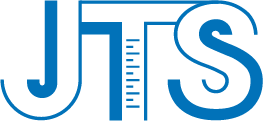IP ProductProduct
Your Location:Home > IP Product•Steel alloys: Lead content must not exceed 0.35% (3500 ppm).
•Aluminum alloys: Lead content must not exceed 0.4% (4000 ppm).
•Copper alloys: Lead content must not exceed 4.0% (40000 ppm).
The EU RoHS Directive also establishes an exemption mechanism, with exemption clauses being updated periodically. In July 2023, the EU adopted Directive (EU) 2023/1526, adding a new lead exemption clause, Item 41a, to Annex IV of the RoHS Directive.
The latest exemption clauses include: lead as an element in steel, aluminum, and copper alloys (unless in EEE or components likely to be placed in the mouth by children, unless the lead release rate does not exceed 0.05 µg/cm²/hour); lead in high-temperature melting solders; and lead in glass or ceramic components. The EU has also set different exemption expiry dates based on product categories. For example, for the use of lead as an alloying element in machined and galvanized steel, the exemption for Category 1-7 and 10 products expired on July 21, 2021, while the exemption for Category 8 (in-vitro diagnostic medical devices) and Category 9 (industrial monitoring and control instruments) expired on July 21, 2023, and July 21, 2024, respectively.
On January 6, 2025, the European Commission formally notified the WTO of an update to the exemption requirements for lead content under the RoHS Directive, planning to revise and extend several lead exemption clauses. The core content of this revision encompasses three main aspects:
1. Exemption Subdivision:The original exemption 7(a) has been subdivided into seven sub-items (7(a)-I to 7(a)-VII). Each sub-item targets specific application areas, such as internal circuit connections, die attach, sealing materials, and audio transducers. This refinement aims to clearly define the scope of exemptions and prevent misuse and improper application.
2. Validity Period Adjustments:
•Lead in high-temperature melting solders:
•The original exemption 7(a) is extended until December 31, 2026.
•The seven new sub-items are extended until December 31, 2027.
•Lead in glass or ceramic components:
•The original exemptions 7(c)-I and 7(c)-II are replaced by new clauses, with validity extended until December 31, 2026, and December 31, 2027, respectively. New exemptions 7(c)-V and 7(c)-VI have been added.
•Lead as an alloying element in steel, aluminum, and copper:
•The original exemptions 6(a), 6(a)-I, 6(b), 6(b)-I, 6(b)-II, and 6(c) are replaced by new clauses. Exemptions are extended until December 31, 2026, or 12 months after the directive's effective date, depending on the clause, with additional restrictions added for some.
3. Scope of Application Change:The new regulation eliminates the practice of differentiating exemption expiration dates based on equipment categories (e.g., medical devices, industrial equipment). All EEE will now uniformly fall under the same clause, simplifying the compliance process.Rationale for the Revision:The extension and revision of the lead exemption clauses stem from the practical challenges in finding technical substitutes. Following an application for extension received in 2020, the European Commission initiated a technical assessment on the feasibility of lead alternatives. The assessment concluded that while some alternatives exist on the market, their performance remains unreliable in most areas, and a comprehensive substitution is not expected to be feasible within the next three years. This technical unreliability makes an immediate total ban on lead in certain applications unrealistic. Forcing an immediate phase-out could lead to decreased performance reliability of EEE and even impact the safe operation of specific devices, such as medical equipment.J-Testing is a CNAS, CMA, and CPSIA accredited laboratory, committed to providing global clients with professional third-party testing, consulting services, and cross-border certification assistance.






 Our Service
Our Service
